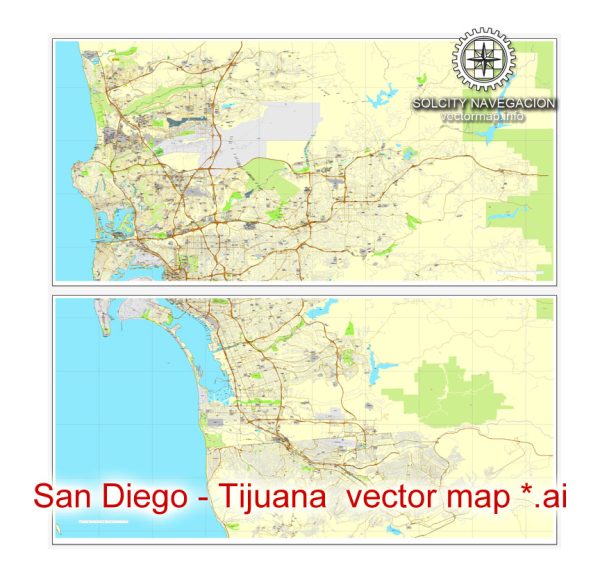San Diego, California, and Tijuana, Mexico, are located in close proximity to one another, with the U.S.-Mexico border separating them. This geographical proximity has a significant impact on the maritime industry and transportation in the region. Here is a description of the maritime industry and transportation in these areas:
- Ports:
- San Diego, California, is home to the Port of San Diego, a major gateway for both commercial and recreational maritime activities. The port encompasses several terminals and facilities, including the Tenth Avenue Marine Terminal, National City Marine Terminal, and the cruise ship terminal. It handles a wide range of cargo, including automobiles, refrigerated goods, and various dry bulk products.
- Tijuana, Mexico, does not have a significant commercial port of its own but relies on the nearby ports, including Ensenada, which is about 80 miles south of Tijuana. The Port of Ensenada plays a crucial role in handling a variety of goods, including agricultural products, minerals, and manufactured goods.
- Cross-Border Trade:
- The U.S.-Mexico border between San Diego and Tijuana is one of the busiest border crossings in the world. This border crossing facilitates a substantial amount of trade between the two countries, with a focus on trucking and rail transportation to and from the region.
- The transportation of goods between the two cities is essential for the supply chains of many industries. This includes the automotive sector, electronics manufacturing, and various other industries that rely on the maquiladora manufacturing plants located in Tijuana and the export of finished products to the U.S. market.
- Rail and Trucking:
- Both San Diego and Tijuana are well-connected by road and rail networks. Interstate 5 runs from San Diego into Tijuana, allowing for the efficient movement of goods and people across the border. Additionally, several border crossing points accommodate trucking traffic.
- The rail infrastructure, including the Pacific Imperial Railroad, connects San Diego to Tijuana and further into Mexico. This rail network is vital for the transport of goods, particularly those industries dependent on just-in-time manufacturing.
- Maquiladoras:
- Tijuana has a robust maquiladora industry, which includes assembly plants and manufacturing facilities for various industries. These facilities benefit from their proximity to San Diego for importing raw materials and exporting finished products. This symbiotic relationship supports economic development on both sides of the border.
- Shipping and Tourism:
- San Diego’s proximity to the Pacific Ocean also makes it a popular destination for cruise ships, attracting tourists and contributing to the local economy. The cruise ship terminal at the Port of San Diego plays a significant role in this industry.
In summary, the maritime industry and transportation in San Diego, California, and Tijuana, Mexico, are closely interlinked due to their geographic proximity and the bustling cross-border trade. The movement of goods, including manufactured products and raw materials, is crucial to the economic development of the region, with various modes of transportation, ports, and maquiladora industries facilitating this trade.


 Author: Kirill Shrayber, Ph.D.
Author: Kirill Shrayber, Ph.D.